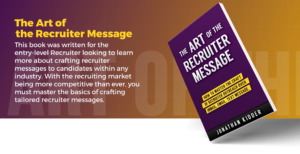
Automating candidate engagement during the sourcing process can greatly streamline your efforts and save time. There are various email tools available that can automate your outreach, maintain candidate interest, and provide ongoing nurturing (touch-points) throughout the entire process.
Why automate this process?
Recruiters can streamline and enhance their candidate outreach efforts by utilizing automation tools. These tools can help with tasks such as scheduling emails and reminders, sending personalized messages, tracking candidate interactions, and organizing candidate information in a centralized database. By automating repetitive and time-consuming tasks, recruiters can free up time to focus on building relationships with potential candidates and providing a better candidate experience. Additionally, automation tools can also help with candidate nurturing by allowing recruiters to send targeted and relevant communications to candidates at key points in the recruitment process. This helps maintain engagement and keeps candidates informed about the status of their application, ultimately leading to a more successful recruitment outcome.
Nurturing Candidates (Passive/Active)
The process of nurturing candidates is often divided into campaigns, which are a series of steps triggered by the candidate’s actions. For example, when a candidate views a job posting, a reminder email to submit an application is sent.
The nurturing process begins as soon as the candidate provides their contact information, such as subscribing to a company newsletter. Once you have their email, you can use branded content to maintain their interest in your company and guide them towards applying for a job.
Candidate Personas
It’s essential to consider who you’re trying to engage and the type of content they’re interested in. Work with hiring managers to determine the ideal candidate persona for the role and create additional personas based on the different individuals you hope to reach. Avoid sending irrelevant content to a candidate, as it’s likely to turn them off from your brand.
Even if a candidate doesn’t receive your job offer, it’s essential to continue nurturing them, as they’ll likely be the first people you reach out to when a new role becomes available. Moreover, they may still feel rejected and restarting the conversation with an impersonal email could harm your relationship.
Timing
Serve content that is relevant to the candidate based on where they are in the recruitment process. If a candidate is new to your brand, avoid sending them specific content, and focus on introducing them to your company mission, values, and other basic information.
Different candidate personas are more likely to engage with content at different times of the day, so leverage your internal data to make an accurate decision. Timing should also consider frequency, as no one wants to receive daily emails from the same company.
However, highly sought-after professionals are only on the job market for 10 days, so you can’t wait to follow up. Consider the desirability of the candidate among competitors when determining the frequency of content delivery.
Automation
Manually nurturing candidates throughout the recruitment process would consume a lot of resources, which is why automation is crucial. Recruitment automation tools can streamline and improve the efficiency of your nurturing process.
For example, your applicant tracking system can automatically send rejection emails to candidates who don’t receive an offer. However, rejection emails should be customized to each candidate, and automation tools can help you organize templates and nurture campaigns tailored to specific candidate personas.
Also, varying your approach to rejection emails, such as a personal phone call for short-list or finalist candidates, can help keep them engaged and usher them into your talent community.
Best Practices for Nurturing Candidate Leads:
Lead nurturing is the process of building relationships with potential candidates over time and guiding them towards a hiring decision. Here are some steps you can take to keep nurturing leads effectively:
Personalize your approach: Customize your messages and approach for each individual lead based on their interests, skills, and needs.
Be consistent: Regularly touch base with your leads and provide them with valuable information and insights. This could be in the form of emails, phone calls, or even personalized videos.
Provide value: Offer value-added content such as industry news, career advice, or training resources to help your leads grow in their careers and build a positive impression of your company.
Listen to feedback: Pay attention to the feedback and questions your leads have, and use this information to tailor your approach and improve your lead nurturing strategy.
Use technology: Utilize tools such as marketing automation, email tracking, and lead scoring to help streamline your lead nurturing efforts and make the process more efficient.
Be patient: Lead nurturing takes time, and it’s important to be patient and persistent in your approach. By staying focused and continually providing value, you can build strong relationships with your leads and ultimately turn them into hires.
Maintain the Purity of Your Data: The success of your nurturing campaigns relies on the accuracy of your data. Duplicate contacts and incorrect personal information will render your efforts inauthentic and uninvolved. Moreover, impure data obstructs the ability to gather insights and enhance your nurturing endeavors. Conduct regular evaluations and arrange your candidate database to guarantee the correctness and currency of your information.
Monitor & Track Progress:
Stay informed about the reaction of candidates to your nurturing efforts by tracking essential recruitment metrics such as email open rate, click-through rate, and conversion rate. Utilize the data gathered to improve your nurturing strategy. Bear in mind that each candidate is distinctive and deserves a tailored experience, especially your top prospects. However, fine-tuning your strategy to better align with your personas will provide you with a solid foundation for nurturing candidates.
Forming a pool of passive candidates is a crucial aspect of recruitment, particularly candidate nurturing. By courteously interacting with candidates before they are prepared to make a change, you will establish yourself as a top employer in their minds when they become active job seekers.
Streamlining the Candidate Outreach Process with Automated Tools
Manually engaging candidates through the sourcing process can be time-consuming and demanding. Fortunately, various email automation tools are available to simplify the process. These tools automate outreach, maintain candidate engagement, and nurture them throughout the recruitment journey.
1. Traditional Email Automation Tools
There are many traditional email automation tools that have been used by both marketing and sales professionals, as well as recruiters, for years and have proven their efficiency. Some of the most popular solutions include Mailchimp, Autopilot, GetResponse, and ActiveCampaign. These tools can assist recruiters in simplifying the process of cold emailing through automation, but they also have several downsides, such as the high cost of keeping candidates on the contact list for an extended period and the manual work required to set up the outreach.
2. Recruiter-Focused Email Automation Tools
There are various email campaign tools specifically designed for recruiters to simplify the outreach process and effectively engage with leads. Some of the most popular ones include GEM, lemlist, and Interstellar, each offering features and campaigns to nurture and maintain interaction with potential candidates throughout the recruiting process.
3. Browser Outreach Extensions Tools
Automating outreach through email or InMail can be made easier with the use of browser extensions. Some popular options include SourceWhale, Hireflow, LinkedIn Helper II, Jobin, and Webbtree, which are designed to streamline the recruitment process and save time for recruiters. These extensions provide features such as bulk emailing, personalized messaging, and analytics, helping recruiters to optimize their outreach efforts and increase their chances of success.
4. Tools for Automated Cold Outreach
There are tools specifically designed to simplify cold emailing for recruiters, such as Mailshake, Reply.io, Lemlist, and Woodpecker. These tools provide a platform to customize cold emails, make them more personalized, and add them to a sending schedule to avoid triggering spam filters. The built-in analytics help to monitor the bounce, open, and reply rates, which is essential for improving email sequences and achieving the best results.
5. ATS systems
Recruiting ATS Well-known recruiting ATSs such as Beamery, Lever, and Workable have built-in tools for emailing candidates, making it convenient for recruiters who work within the ATS.
How to use chatgpt for automating email outreach campaigns?
Provide ChatGPT with the necessary information: Input details such as company name, position, key requirements, and desired outcomes, as well as any specific language or tone you would like the template to have.
Looking for more recruiter template examples? I wrote a book titled: The Art of the Recruiter Message that is worth reviewing←
- AI Search Will Transform Talent Sourcing Forever - January 10, 2025
- Build an AI Sourcing Assistant using ChatGPT 4 - January 10, 2025
- Top Recruiting Leaders to Follow in 2025 - January 8, 2025

